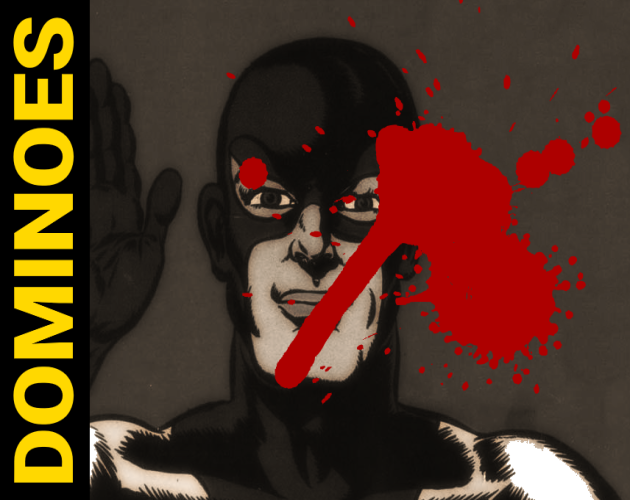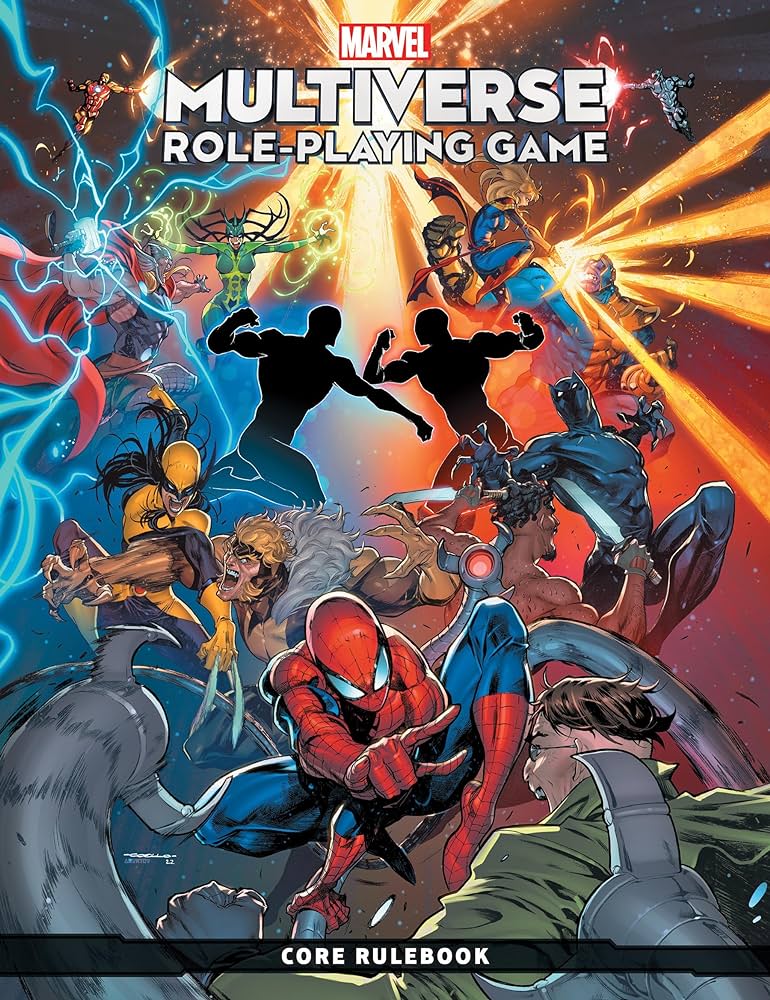Whether you love summer blockbusters with big-budget action scenes, gritty superheroes with everything to lose, or plucky super-powered teenagers making mistakes as they learn to control their abilities, this list of the 10 best superhero TTRPGs will have something for you.
10. Mutants and Masterminds (Green Ronin Publishing)
A true heavy-hitter of the superhero RPG genre, Mutants and Masterminds (M&M) has been around since the early 2000s and has maintained its popularity despite the number of rival superhero RPGs that have risen to the challenge. Now in its third edition, M&M is a d20-based game with a wealth of settings for any superhero style, including licensed adaptations of DC Comics and Wild Cards, the shared universe edited by George R. R. Martin. M&M is a bit crunchier than the other games on this list, with much more depth in how it represents superhero action mechanically.
9. Sentinel Comics: The Roleplaying Game (Greater Than Games)
Based on the best-selling co-operative card game Sentinels of the Multiverse, Sentinel Comics explicitly focuses on the action, with montages, social scenes and investigation used to create one-off mechanical benefits. Powers are abstracted enough that godlike beings with world-shaping abilities still have the same mechanical toolkit as gadget-wielding vigilantes. One of the real shining parts of this system is the lifepath, which helps players build a character from their background and power source through to their actual mechanical abilities.

8. Wearing the Cape: The Roleplaying Game (Imagined Enterprises Incorporated)
In this role-playing game based on his own series of superhero novels, Marion G. Harmon uses the FATE system to explore a superheroic world that diverged from ours in the 90’s when every person in the world suffered a blackout of both their senses and worldwide power, with some developing superpowers as a result. Flavorful details mean this rises above many other superhero games, as players choose a broad ‘type’ of power from the in-universe classifications of superpowers and villains are a counter-cultural movement rebelling against the idolization of superheroes.
7. Dominoes (Jeff Stormer)
For a DIY approach to superhero narratives, try Jeff Stormer’s love letter to Bronze Age comics. Dominoes is incredibly lightweight as a rules set, with the core game only including very basic (and yet compelling) rules for taking actions and rules for superpowers, villains, getting hurt and more complex combat in the optional Dominoes: Back Issues. Nevertheless, Dominoes has a lot to say about the nature of heroism in an age of comics that were grittier and more violent than most, and the light rules make it incredibly easy to pick up and run.

6. Icons Superpowered Roleplaying (Ad Infinitum Adventures)
The quintessential game of chaotic superheroes, Icons is popular for its fast-paced gameplay, random character creation and accessible rules. Cartoonish in art, tone and rules, Icons puts the emphasis on fun, silly action without delving too deeply into the nitty gritty of how many kilograms an elephant weighs. The random character creation means players can go from blank sheets to ready to play in five minutes, and the core book is filled with examples of play to help GMs learn the ropes quickly.
5. Marvel Multiverse Role-Playing Game (Marvel Universe)
From a pretty simple core mechanic in the wonderfully-named d616 system, Marvel Multiverse expands out lots of different layers of complexity. From the use of a character’s Rank to scale elements like damage to the brilliant Team Maneuvers that allow all team-mates to gain a special bonus to attack, defense or recovery, Marvel Multiverse feels adaptable and fun.

4. Venture City (Evil Hat Productions)
The highly flexible FATE system is an obvious match for a superhero game, and Venture City uses it as an excellent basis for a game of street-level heroes and do-gooding vigilantes. Venture City introduces a unique power system for FATE which distils characters down into a single power with a high degree of customisability. Venture City also puts focus on the city itself, making street-level characters and the corruptions, conflicts and challenges of the city central to the story.
3. City of Mist (Son of Oak Game Studio)
City of Mist is about ordinary people who unlock the powers of great legendary beings called a Mythos, whether an urban legend like Bloody Mary or a literary figure like Peter Pan. Inspired by Powered by the Apocalypse games but with its own rich mechanical additions, the system uses tags to decide what you add to your roll rather than fixed attributes. City of Mist sees every scene as important in contributing to the overall narrative, positioning the characters as superpowered investigators rather than action heroes.

2. Marvel Heroic Roleplaying (Margaret Weis Productions)/Cortex Prime (Cam Banks)
Tragically no longer available due to the Marvel license changing hands, Marvel Heroic Roleplaying (MHRP) successfully maps existing superheroes (and the many different iterations of them) onto a thrilling mechanical system. The introduction of power sets that players can choose to have go wrong in exchange for Plot Points is inspired, while mechanics like the GM-controlled Doom Pool make running dynamic scenes fun and easy. While you can no longer get the original MHRP, Cortex Prime by one of MHRP‘s designers, Cam Banks, has all the component parts of the system as a toolkit and its own mythological superhero setting, Eidolon Alpha.
1. Masks: A New Generation (Magpie Games)
Magpie Games’ TTRPG of teen superheroes, Masks: A New Generation, uses the Powered by the Apocalypse system to explore the trials and tribulations of having powers you can’t control. Its innovative set of attributes change based on characters’ actions and describe the kind of superhero they are, while playbooks evoke the core conflict of each superheroic archetype. Masks is a genuinely brilliant game that reaches into the heart of teenage superhero narratives, while never losing sight of the need for big, heroic action scenes.














Published: Jun 27, 2024 6:38 PM UTC